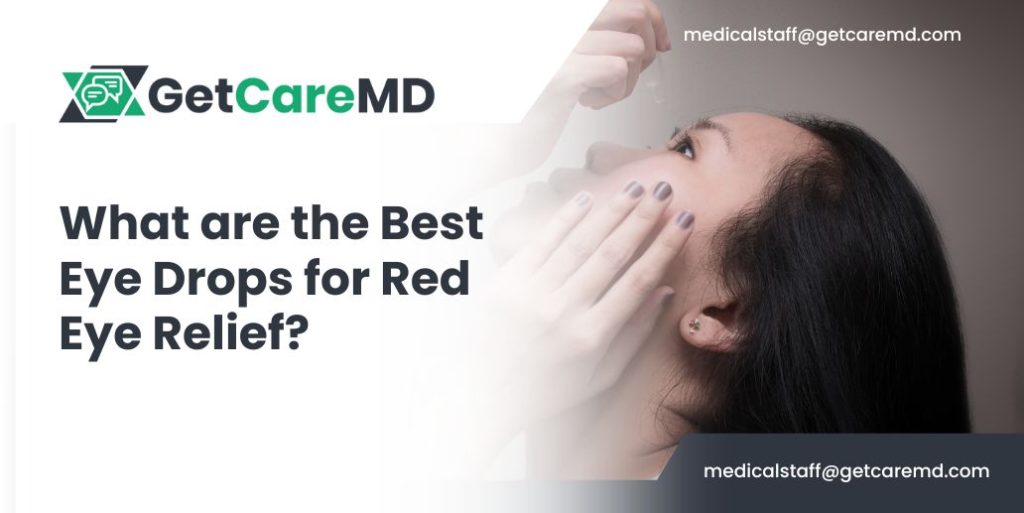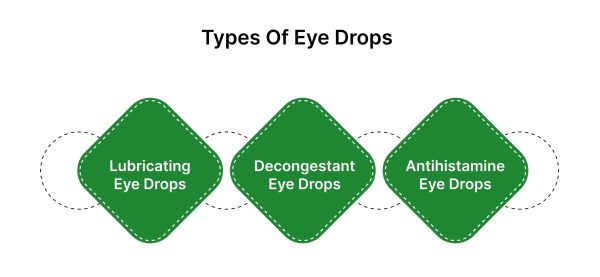Red eyes can be uncomfortable and concerning, often caused by factors like dryness, allergies, or fatigue. Understanding the right type of eye drops is crucial for immediate relief, but not all eye drops work the same way. While some can provide quick relief by constricting blood vessels to reduce redness, others target underlying issues like dryness or allergies.
Immediate relief is possible with the right choice, but it’s important to address the root cause to prevent recurring symptoms. Let’s explore the best options available and how they can help clear up those red eyes effectively.
Understanding Red Eyes
Red eyes are a common condition caused by inflammation or irritation in the eye’s blood vessels, making them appear red or bloodshot. Various factors can lead to this, including allergies, dry eyes, prolonged screen time, and exposure to environmental irritants like smoke or dust.
Each of these triggers affects the eyes differently, but they all share the common result of discomfort and redness. Understanding the cause of your red eyes is essential for choosing the right treatment, such as eye drops, to alleviate symptoms effectively.
Causes of Red Eyes:
- Allergies: Triggered by pollen, pet dander, or other allergens.
- Dryness: Insufficient lubrication, often exacerbated by dry or windy environments.
- Prolonged Screen Use: Reduces blinking rate, leading to dryness and strain.
- Environmental Factors: Exposure to smoke, dust, or harsh winds.
When to Use Eye Drops:
- When experiencing persistent redness or irritation.
- For immediate relief from dryness or minor allergies.
- To soothe eyes strained from extended screen time.
- To reduce redness caused by environmental irritants.
Types of Eye Drops
Choosing the right type of eye drops depends on the specific cause of your red eyes. Here are the main types available:
- Lubricating Eye Drops: Ideal for relieving dryness and irritation by providing moisture and restoring the eye’s natural tear film.
- Decongestant Eye Drops: Work by narrowing blood vessels in the eye to reduce redness, providing quick but temporary relief.
- Antihistamine Eye Drops: Specifically formulated to combat allergy-related symptoms like itching, redness, and swelling by blocking histamines.
Top Recommendations
- For General Redness: Lumify Redness Reliever offers quick relief without causing rebound redness.
- For Budget-Friendly Relief: Visine Redness Relief is a cost-effective option but may cause a rebound effect if overused.
- For Dry Eyes: Rohto DryAid Eye Drops hydrate and soothe dry eyes, tackling one of the primary causes of redness.
- For Contact Lens Users: Clear Eyes Multi-Action Relief is safe for contact lenses, providing lubrication and irritation relief.
- For Allergies: Opcon-A and Zaditor Antihistamine Eye Drops target allergy symptoms, offering relief from itching and redness.
Choosing the Right Eye Drops
Selecting the appropriate eye drops involves more than just grabbing the first bottle on the shelf. It’s crucial to consider the key ingredients that will address the specific cause of your red eyes.
For instance, brimonidine is effective in reducing redness without causing a rebound effect, propylene glycol is excellent for hydrating dry eyes, and antihistamines are essential for tackling allergy-related symptoms.
Understanding these ingredients helps in choosing the right product and avoiding unwanted side effects.
Key Ingredients to Look For:
- Brimonidine: Reduces redness by constricting blood vessels without rebound effects.
- Propylene Glycol: A lubricant that provides moisture, ideal for dry eyes.
- Antihistamines: Block histamines to reduce allergy-related redness and itching.
Avoiding Side Effects:
- Rebound Redness: Common with overuse of decongestant drops; use sparingly.
- Allergic Reactions: Check for known allergens in the ingredient list.
- Preservatives: Some preservatives can cause irritation; opt for preservative-free options if sensitive.
Expert Tips
Proper usage of eye drops can maximize their effectiveness and minimize potential side effects. Always wash your hands before applying drops, tilt your head back, pull down the lower eyelid, and place a drop in the pocket formed without touching the dropper to your eye.
Allow the drops to absorb by keeping your eyes closed for a few seconds. Follow the recommended dosage to prevent overuse, especially with drops that can cause rebound redness or irritation.
How to Apply Eye Drops Correctly:
- Wash hands thoroughly before application.
- Tilt your head back, pull down the lower eyelid, and place the drop in the pocket.
- Avoid touching the dropper to your eye to prevent contamination.
How Often You Can Safely Use Eye Drops:
- Follow the instructions on the product label or your doctor’s advice.
- Most lubricating drops can be used frequently, but decongestant drops should be limited to prevent rebound redness.
- Antihistamine drops are typically safe for multiple uses per day as directed.
Conclusion
Finding the best eye drops for red eye relief involves understanding the specific cause of your redness and selecting the right type of drops to address it. Whether you’re dealing with dryness, allergies, or irritation from screen use, choosing eye drops with the correct ingredients like brimonidine, propylene glycol, or antihistamines can make a significant difference.
Always apply them correctly and follow usage guidelines to avoid side effects like rebound redness. By choosing wisely, you can effectively manage and relieve your red eyes, keeping them clear and comfortable.


